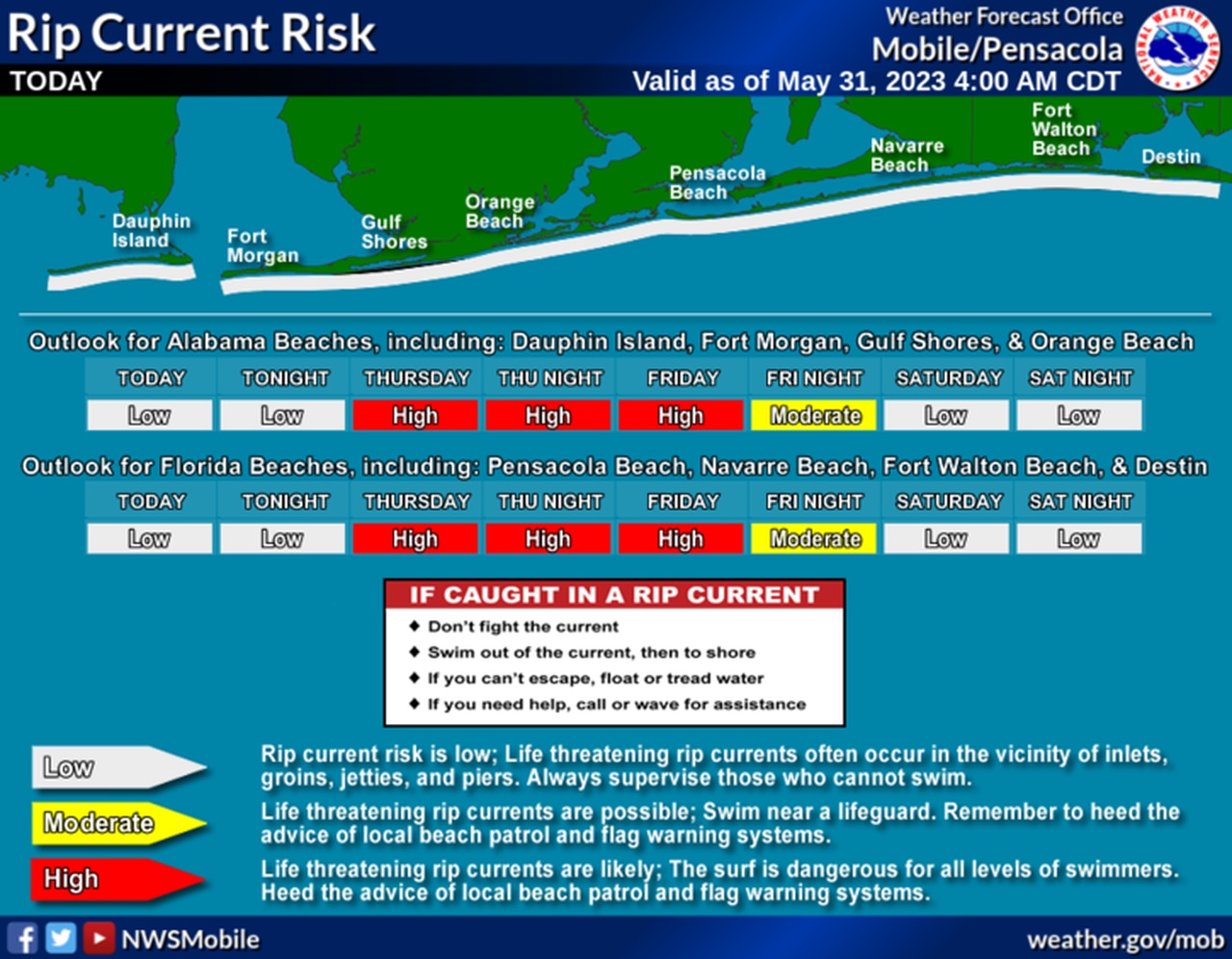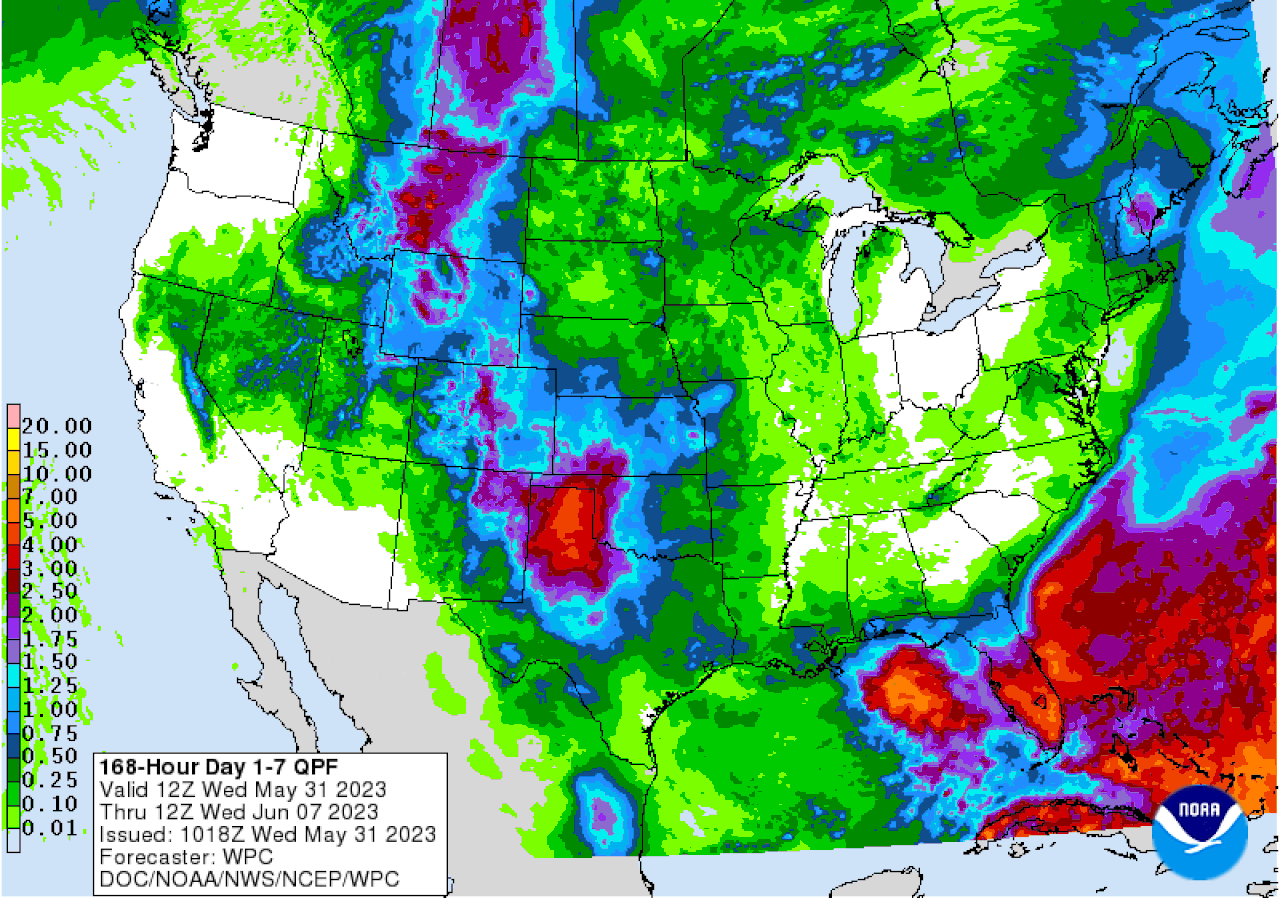Hurricane forecasters keeping eyes on the Gulf
The National Hurricane Center continued to watch an area of disturbed weather in the Gulf of Mexico on Wednesday, one day before the official start of the 2023 hurricane season.
As of Wednesday morning the disturbance has a low chance — 20 percent — of becoming a tropical depression or tropical storm over the next seven days, the hurricane center said.
It is expected to bring higher rain chances and a high risk of deadly rip currents to Alabama’s coastline on Thursday, according to the National Weather Service.
As of Wednesday the disturbance was a disorganized mass of rain and storms in the eastern Gulf. The hurricane center said it is expected to drift around that part of the Gulf over the next several days.
Conditions are only “marginally favorable” for the system to develop while it’s in the Gulf, forecasters said.
The disturbance is forecast to track across the Florida Peninsula this weekend and then emerge into the southwestern Atlantic.
It could bring a lot of heavy rain to south and central Florida as well as gusty winds, according to the weather service.
Here’s a look at rainfall projections over the next week, which shows South Florida possibly getting 3 to 4 inches of rain or more:
A tropical disturbance in the Gulf could bring a lot of rain to parts of Florida over the next week.
As for Alabama, the National Weather Service in Mobile said the disturbance could help raise rain chances over coastal Alabama starting tonight and lasting into Thursday. Rain chances are expected to be lower on Friday and into the weekend.
Forecasters will raise the risk of rip currents to high, the highest category, from Thursday until Friday night. Rip currents are the biggest weather-related killer for the weather service in Mobile, whose coverage area includes southeast Mississippi and northwest Florida as well as southwest Alabama.
Here is the rip current outlook from the weather service:

A high risk of rip currents will be in effect on Thursday for Alabama and northwest Florida coastal areas.
There are no other areas in the Atlantic being watched for tropical development as of Wednesday.
The Atlantic hurricane season officially begins Thursday, June 1, and will last until Nov. 30.
NOAA is forecasting a near-average season as far as the number of storms goes, with possibly 12-17 named storms (that includes tropical storms and hurricanes), five to nine hurricanes and one to four major hurricanes (Category 3 or stronger storms).
